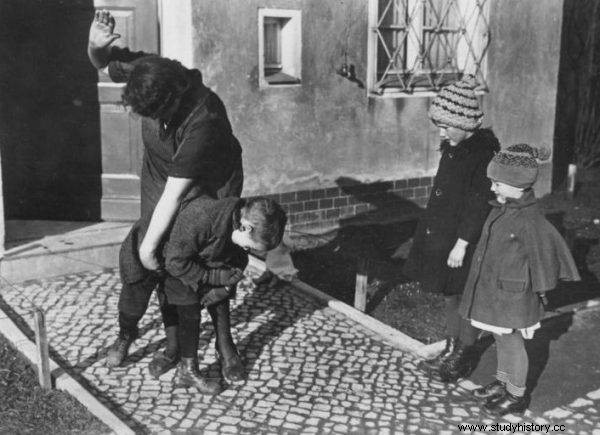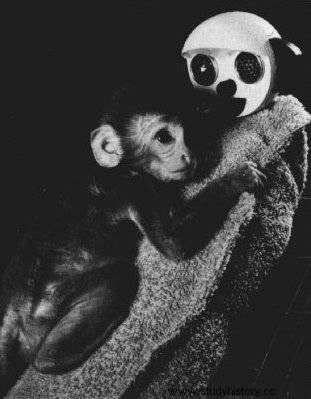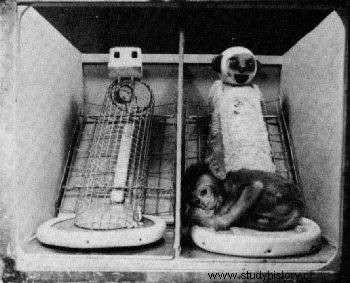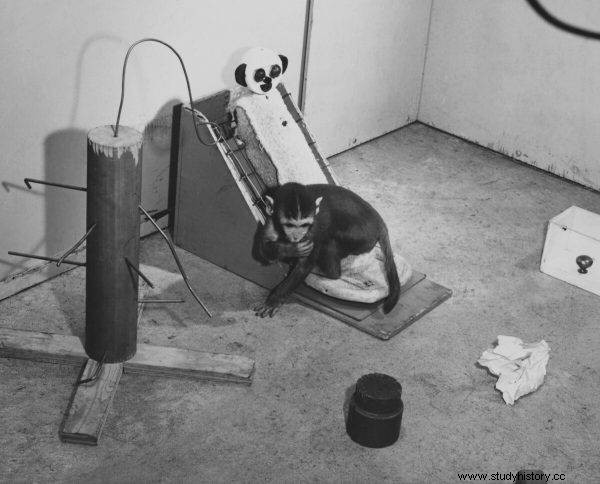Harry Harlow spent years studying the effects of touch on the development of mammals. He proved that his absence has tragic consequences. However, the course of the experiments is chilling.
Harry Harlow's experiment turned out to be groundbreaking. The researcher spent years proving that the lack of maternal touch in the early phases of macaque life contributes to disease and aggressive behavior in monkeys. To do this, he conducted a sadistic experiment.
Cold farming method
Today, nobody doubts that touch plays an important role in a child's development. And although this knowledge seems almost intuitive to us, from a historical perspective it is a relatively recent discovery. When Harlow began his research on the subject, there was a different belief.
Even in the 1950s it is difficult to find significant differences between raising children and ... training animals. The common trend at the time was the Dutch rule of the "three Rs": Rust, Reinheid, Regelmaat - calm, cleanliness, regularity . What did that mean in practice? From an early age, a child had to learn loud, disturbing behavior. The well-bred child was quiet, disciplined and strictly adhered to the schedule of the day. And most of all - it was not allowed to pamper him. In the 1950s, there was a strong belief that carrying around crying babies should be avoided. And it will not be very exaggerated to simplify that care came down to feeding, changing and taking care of bedtime.

photo:Bundesarchiv, Bild 183-R79742 / CC-BY-SA 3.0 Even in the 1950s, it is difficult to find significant differences between raising children and ... animal training.
Under these circumstances, Harry Harlow tried to prove otherwise. The American psychologist assumed that children should be hugged. However, the way in which he conducted his experiments beats the script of more than one horror film.
Artificial mothers
The choice fell on animals that resemble humans in many ways. Harlow's experiment began with the separation of a group of young king macaques from their biological mothers. The man replaced them with properly prepared puppets. The monkeys were "looked after" by a mock-up in the form of a wire cylinder. The second "mother" resembled a macaque. It was built using a soft, pleasant to the touch fabric that was supposed to imitate fur. The scientist has been observing rhesus monkeys in various environments for years. The main aim of the study was to find out how the type of the puppet will affect the behavior of young monkeys and their further life.

The macaques preferred the company of a soft mockup whenever they had a choice.
As you can easily guess, macaques, whenever they had a choice, preferred the company of a soft mock-up. If both "mothers" were in the cage, they chose the nicer one - even if she had no food. They only approached the wire fence driven by hunger.
How scare it till…
Well, to whom? Part of the study was the observation of baby rhesus monkeys in stressful situations. The scientist scared the monkeys. He used a loud toy - a teddy bear playing on a drum . When the macaques were scared, they always cuddled up to a soft puppet. And if there was only wire in the cage, they cuddled up to each other. Or they froze frightened. Some of them would instinctively crouch, rock and start screaming.
But this is not the end. Harlow's research team took it a step further. Scientists designed "mother monsters" . They had a nice touch part to cuddle up to. And besides - a sadistic trap. Little animals could come across four unpleasant surprises. The first type of dummy had a built-in mechanism that shook the child strongly. The second - he was blowing a strong stream of air on them. The third type of "mothers" was equipped with steel frames that repel hugging rhesus monkeys. At the last one, monkeys could be unexpectedly pinched by blunt spikes.

Scientists designed "mother monsters". They had a nice touch part to cuddle up to. And besides - a sadistic trap.
Harlow's observations turned out to be extremely dramatic. The brutal treatment did not discourage the test animals from seeking contact with the "mother-monsters" . The scientist described how the macaques: forgave and forgot about the inflicted harm . Moreover, this group wanted contact even more than the other monkeys . They pleaded with the "carers" more often than the children of normal mothers. On the other hand, they devoted much less energy to contact with their peers.
What happened to the macaques?
The impact of the experiment on the animals was disastrous. Despite consuming the same amount of food and maintaining a similar weight, insensitive monkeys developed much worse . They were less likely to play and suffered frequently from diarrhea. In addition, after the end of the study, the rhesus monkeys behaved disturbingly similar to people with mental disorders.

After the study was completed, the rhesus monkeys behaved disturbingly similar to people with mental disorders.
Monkeys "raised" with wire constructions and "mother-monsters" turned out to be very distrustful of their surroundings. For the most part they stayed aloof and showed no interest in herd life. Compared to the rest, they behaved much more aggressively. Additionally, adult females avoided sexual activity and, once they gave birth to their own children, often abandoned them. The victims of "cold breeding" also differed from the rest biologically. Their breathing was faster and the pressure was constantly increased. The monkeys moved less efficiently than their peers growing up in healthier conditions. In contrast, postmortem autopsies showed large, irreversible changes in the brain.
For obvious reasons, the tests could not be repeated on children. Fortunately, the scientist himself did not intend to do so.
